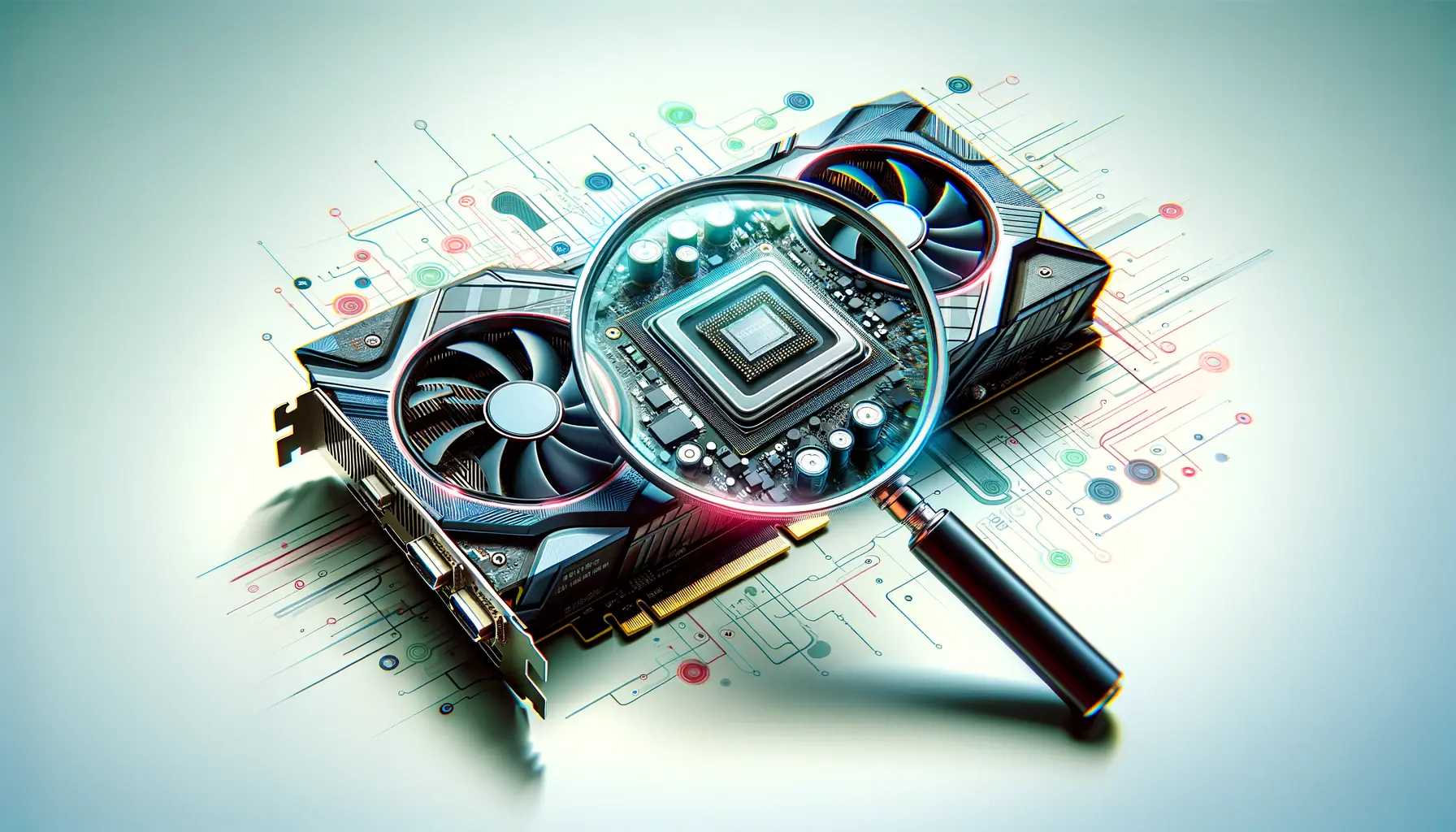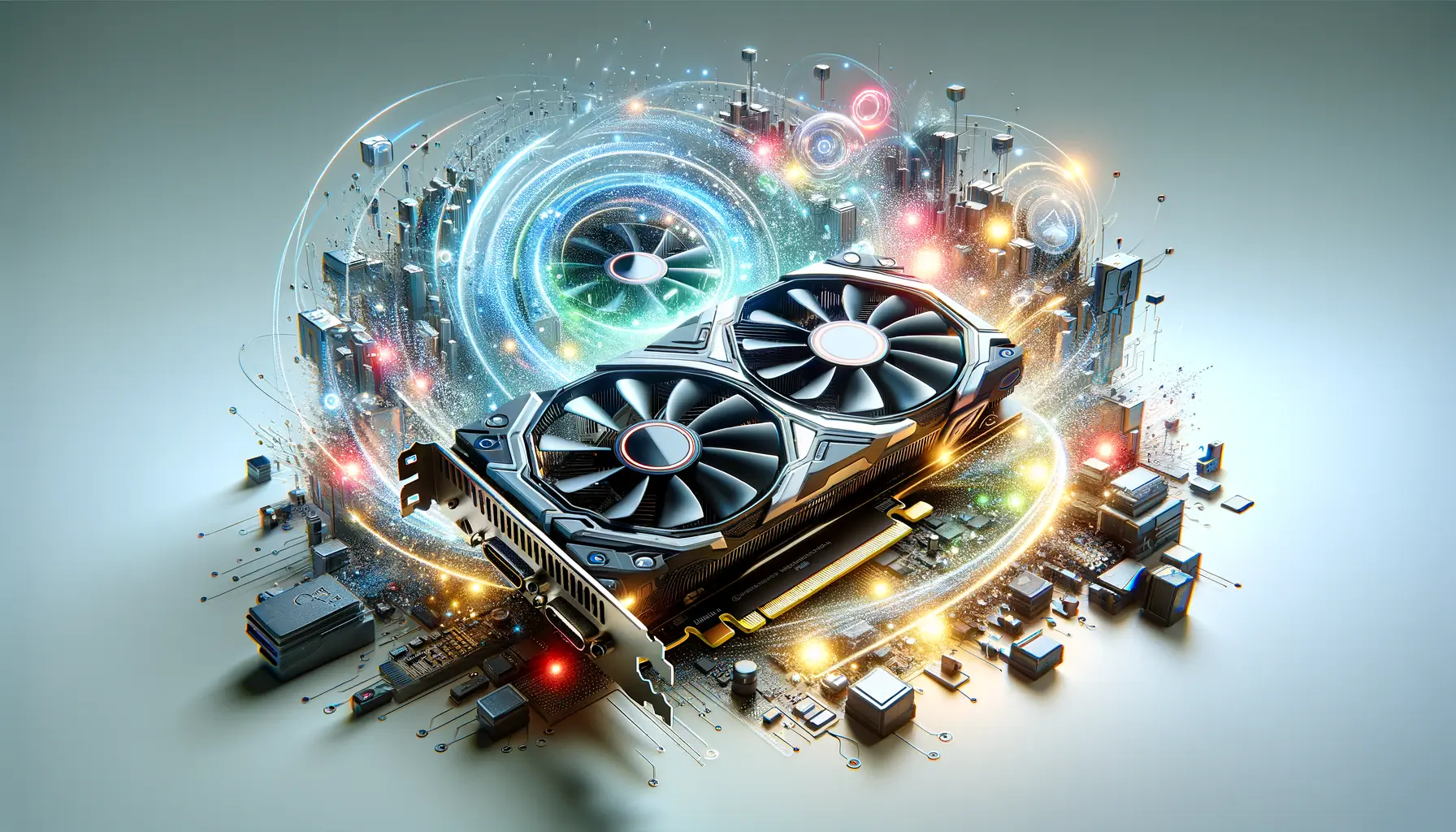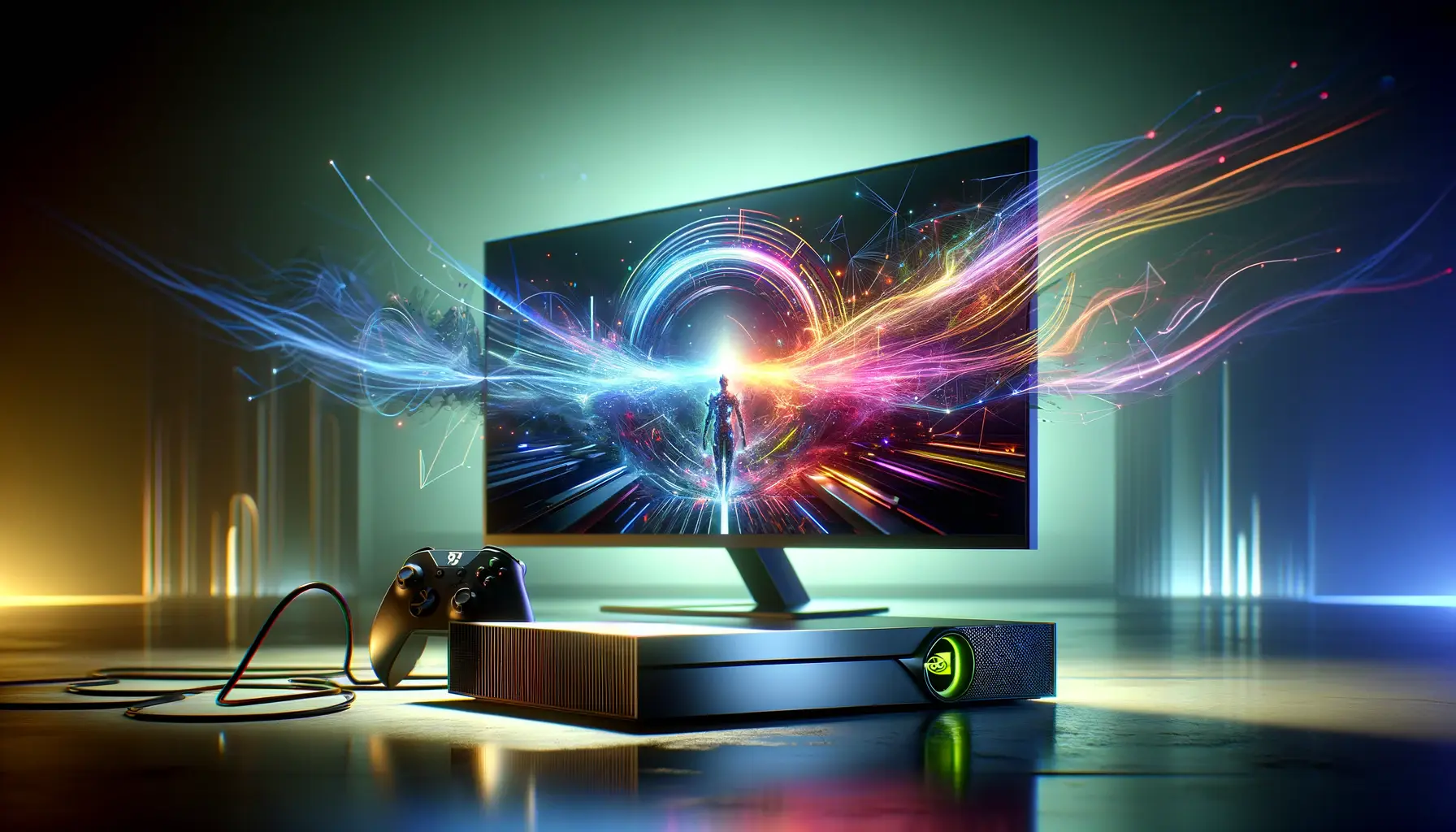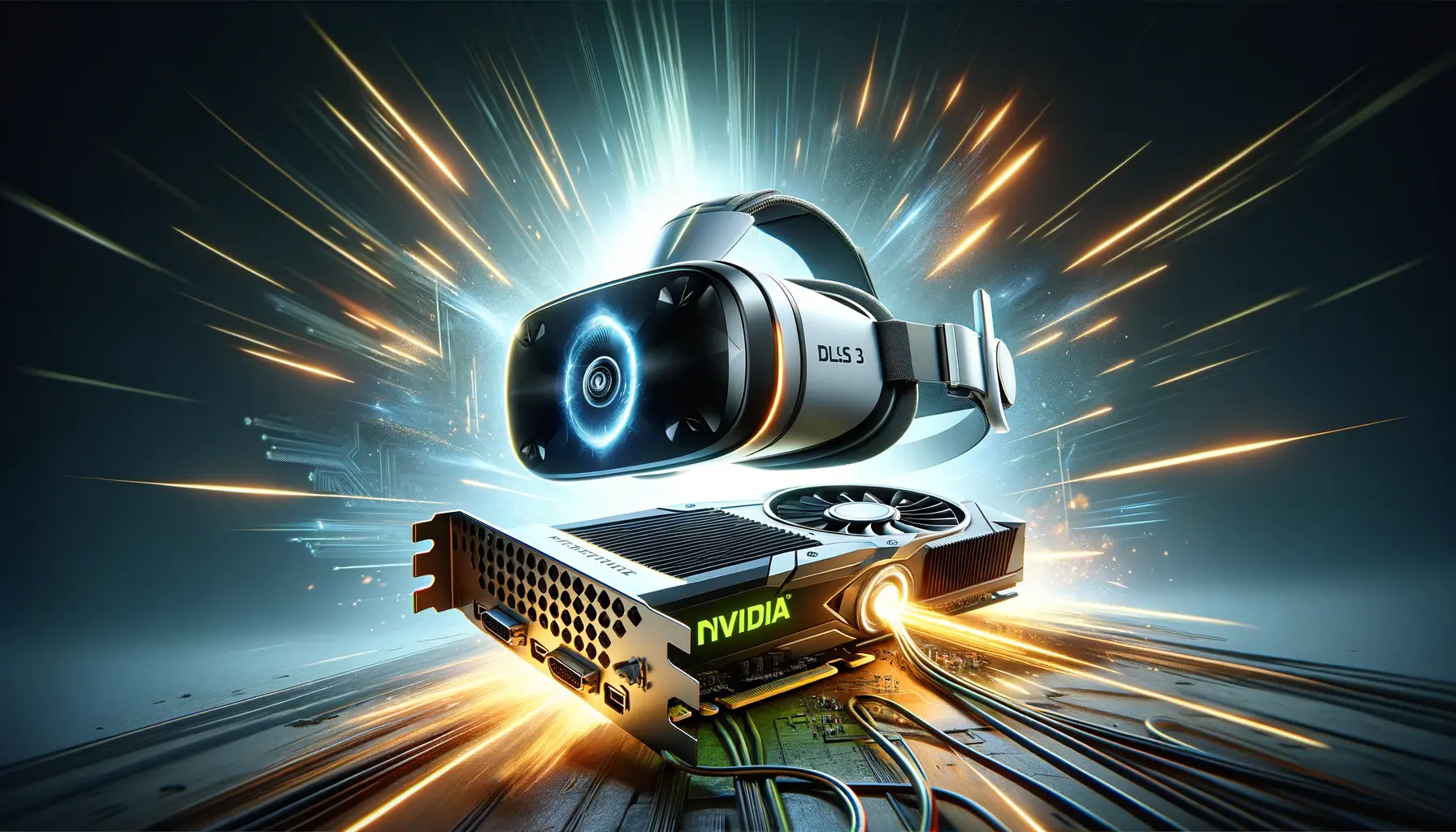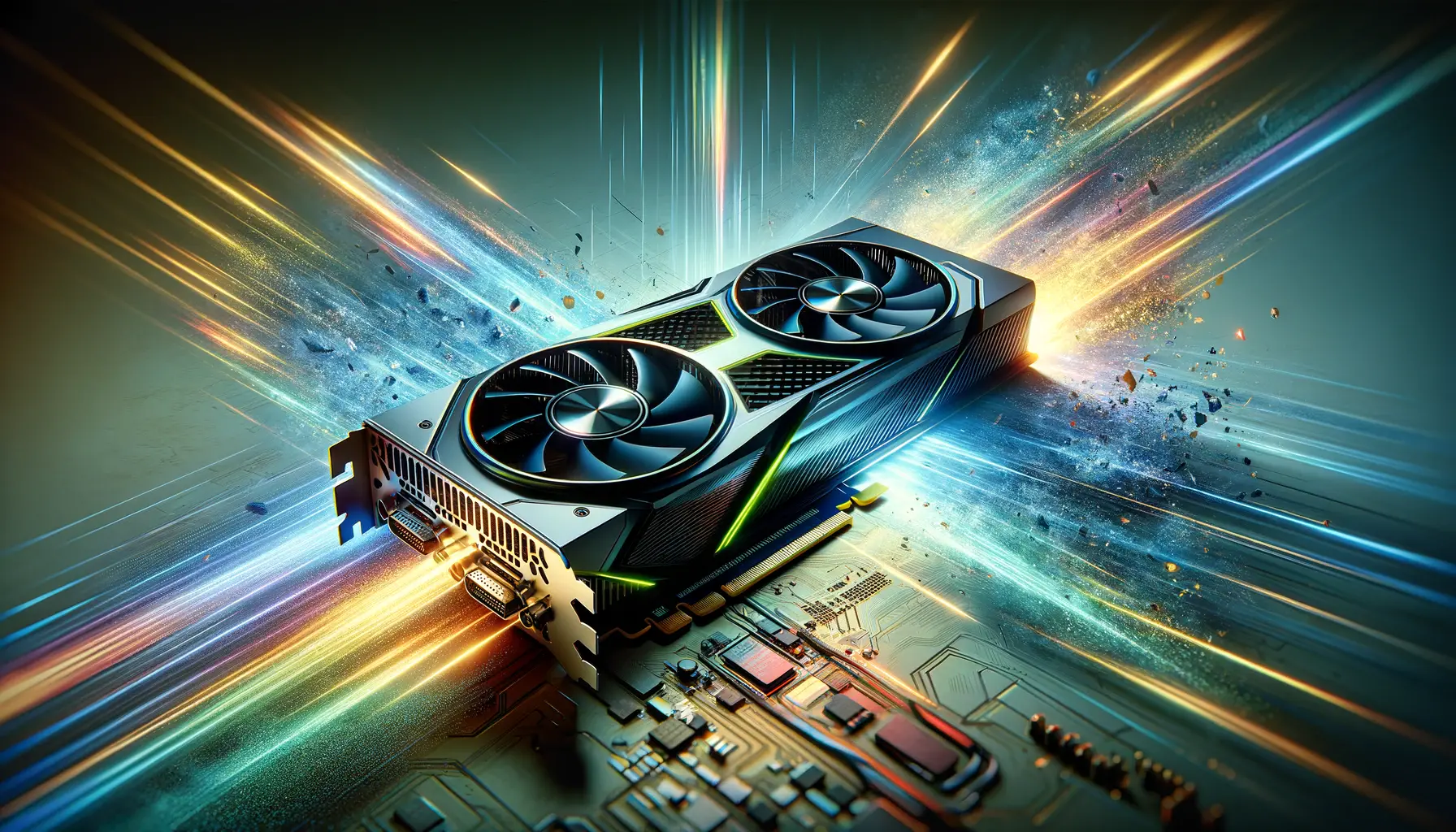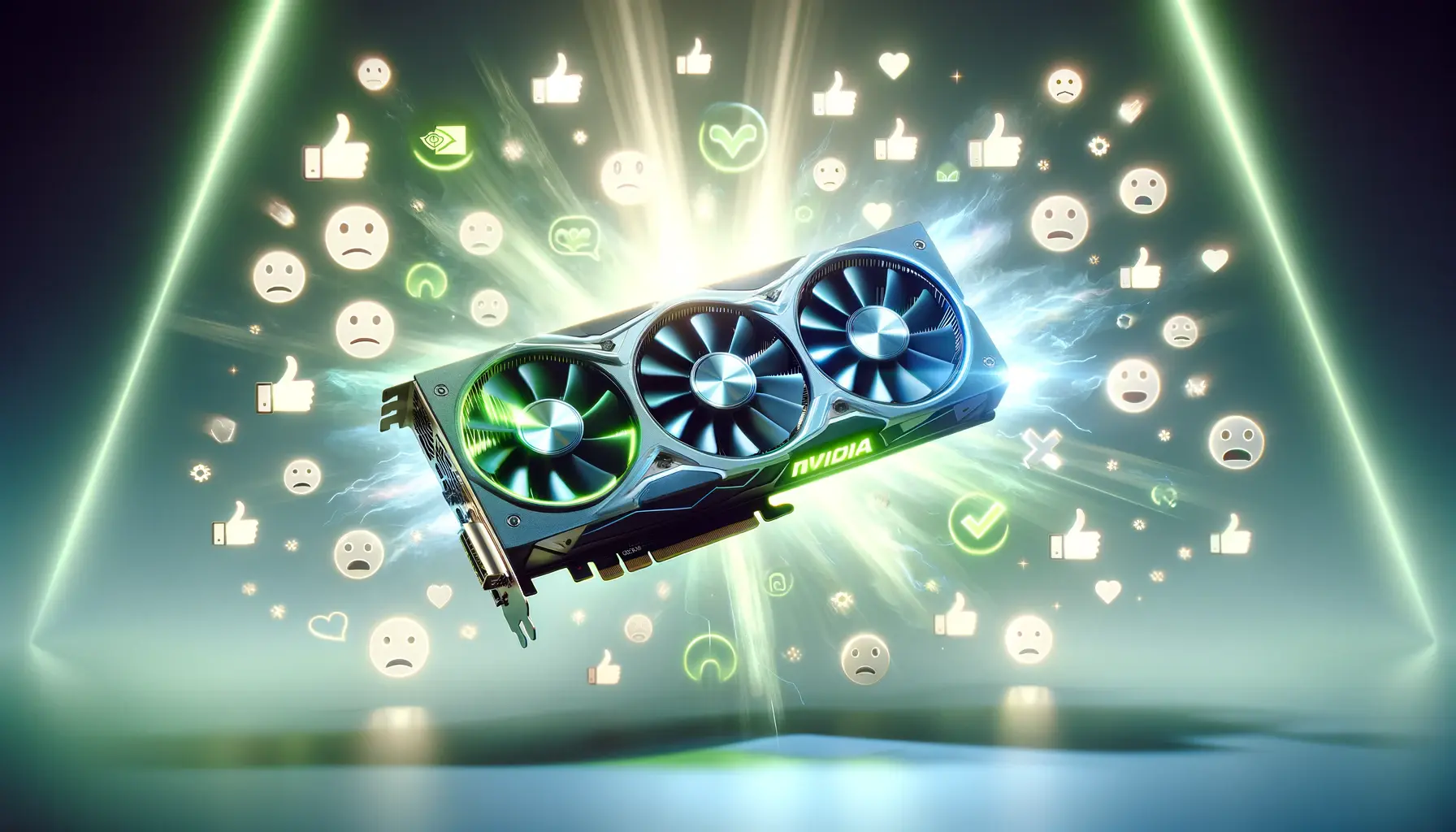With the advent of NVIDIA’s DLSS 3, the gaming and graphics rendering landscape is poised for a significant transformation.
DLSS, or Deep Learning Super Sampling, has been a game-changer since its inception, leveraging AI and machine learning to enhance graphics performance without compromising on quality.
The latest iteration, DLSS 3, promises to elevate this technology to new heights, offering unprecedented frame rate boosts and image quality enhancements.
This article delves into the hardware requirements and capabilities of NVIDIA DLSS 3, providing insights into how it reshapes the future of gaming and graphical fidelity.
At the core of DLSS 3’s groundbreaking performance lies NVIDIA’s relentless pursuit of innovation.
By integrating advanced AI algorithms with the power of GeForce RTX GPUs, DLSS 3 not only improves frame rates but also enhances the gaming experience with superior image quality.
This technology represents a significant leap forward, setting new standards for what gamers and professionals can expect from their hardware.
Understanding the hardware requirements for DLSS 3 is crucial for anyone looking to harness its full potential, whether for gaming, content creation, or other graphics-intensive tasks.
- Introduction to DLSS Technology
- Hardware Requirements for DLSS 3
- DLSS 3’s Impact on Gaming Performance
- Compatibility and Supported Games
- Understanding Frame Generation
- DLSS 3 and Professional Applications
- Future Directions of DLSS Technology
- Embracing the Future with NVIDIA DLSS 3
- NVIDIA DLSS 3: Frequently Asked Questions
Introduction to DLSS Technology
What is DLSS?
Deep Learning Super Sampling (DLSS) is NVIDIA’s revolutionary AI-powered technology designed to boost graphics performance.
By utilizing dedicated Tensor Cores on GeForce RTX GPUs, DLSS intelligently upscales lower-resolution images in real-time, achieving higher resolutions without the traditional performance penalty.
This process not only increases frame rates but also maintains or even improves image quality, providing a smoother and more immersive gaming experience.
Since its first introduction, DLSS has undergone several iterations, each improving upon the last in terms of efficiency, image quality, and compatibility.
DLSS 3, the latest version, introduces innovative features like Frame Generation and Reflex, pushing the boundaries of what’s possible in real-time rendering.
These advancements make DLSS 3 a cornerstone of modern gaming, enabling detailed and fluid visuals even on demanding titles and resolutions.
Evolution of DLSS
The evolution of DLSS from its first version to DLSS 3 showcases NVIDIA’s commitment to leveraging AI for enhancing gaming performance.
Initially, DLSS faced criticism for its image quality, but NVIDIA quickly addressed these concerns with DLSS 2.0, which offered significant improvements in image clarity and performance boosts.
DLSS 2.0’s success laid the groundwork for DLSS 3, which combines super resolution with AI-powered frame generation, offering up to 4x performance improvements in supported games.
DLSS 3’s introduction of Frame Generation marks a pivotal moment in graphics technology.
By generating additional frames, DLSS 3 reduces latency and increases frame rates dramatically, making games feel more responsive.
This is particularly beneficial in fast-paced titles where every millisecond counts.
The integration of NVIDIA Reflex further enhances responsiveness, ensuring that gamers have the competitive edge they need.
DLSS 3 represents the pinnacle of AI-powered graphics enhancement, setting a new standard for performance and image quality in gaming and beyond.
Hardware Requirements for DLSS 3
The hardware requirements for DLSS 3 are specifically tailored to leverage the full capabilities of NVIDIA’s GeForce RTX 40 series GPUs.
These requirements are crucial for users to understand, as they determine the ability to utilize DLSS 3’s advanced features, including AI-powered frame generation and super resolution.
Below, we outline the essential hardware components needed to run DLSS 3 effectively:
- GPU: NVIDIA GeForce RTX 40 series graphics cards are the cornerstone for DLSS 3, equipped with the latest Ada Lovelace architecture. This new generation of GPUs introduces significant improvements in performance, including more Tensor Cores and an advanced Optical Flow Accelerator, both essential for DLSS 3’s frame generation technology.
- CPU: While DLSS 3 primarily leverages the GPU for its operations, having a modern CPU can help ensure that there are no bottlenecks in processing. A high-performance CPU from recent generations (Intel Core i5/i7/i9 10th Gen or higher, AMD Ryzen 5/7/9 3000 series or newer) is recommended for optimal performance.
- Memory: A minimum of 16GB RAM is recommended to handle the increased data throughput and ensure smooth operation alongside DLSS 3’s demanding processes.
- Storage: An SSD (Solid State Drive) with ample storage space is recommended for faster game load times and overall system responsiveness. DLSS 3 itself does not require additional storage, but modern games that utilize DLSS 3 may have substantial storage requirements.
- Display: To fully appreciate the visual enhancements offered by DLSS 3, a high-resolution monitor capable of at least 1080p, preferably 1440p or 4K, is recommended. High refresh rate monitors (144Hz or higher) can also complement the frame rate improvements provided by DLSS 3.
It’s important to note that while DLSS 3 is designed for the RTX 40 series, NVIDIA continues to support DLSS 2 on older RTX GPUs.
This ensures that users with previous generation hardware can still enjoy performance improvements and enhanced visuals, albeit without the full suite of features provided by DLSS 3.
To check if your system is ready for DLSS 3, NVIDIA provides a compatibility tool on their website, allowing users to assess their hardware against the requirements.
DLSS 3’s Impact on Gaming Performance
The introduction of DLSS 3 has set a new benchmark for gaming performance, offering significant improvements in both frame rates and image quality.
This section explores the tangible benefits gamers can expect when enabling DLSS 3 in their favorite titles, highlighting the technology’s impact on the overall gaming experience.
Frame Rate Improvements
One of the most notable benefits of DLSS 3 is its ability to dramatically increase frame rates.
By intelligently generating additional frames, DLSS 3 allows games to run at much higher frame rates than would be possible with traditional rendering techniques.
This is particularly beneficial for high-resolution gaming, where maintaining smooth frame rates can be challenging.
Gamers can expect performance improvements of up to 4x in supported titles, transforming the playability of demanding games on 4K displays.
Enhanced Image Quality
DLSS 3 not only boosts performance but also enhances image quality.
The AI-driven super sampling technique accurately reconstructs high-resolution images from lower-resolution inputs, resulting in crisp, detailed visuals that rival or surpass native rendering.
This means gamers no longer have to choose between performance and visual fidelity; DLSS 3 offers the best of both worlds.
Reduced Latency with NVIDIA Reflex
NVIDIA Reflex integration in DLSS 3 further enhances the gaming experience by reducing system latency.
This ensures more responsive gameplay, which is crucial in competitive gaming scenarios where every millisecond counts.
Reflex achieves this by optimizing the rendering pipeline, allowing gamers to experience more immediate feedback from their inputs, leading to improved accuracy and reaction times.
- Increased frame rates enable smoother gameplay, especially in fast-paced action and competitive titles.
- Superior image quality ensures that gamers do not have to compromise on visual details for performance.
- Lower latency contributes to a more responsive gaming experience, giving players a competitive edge.
The cumulative effect of these improvements is a more immersive and enjoyable gaming experience.
Whether battling it out in a competitive shooter, exploring vast open worlds, or enjoying the latest AAA titles, DLSS 3 enhances every aspect of gameplay.
Considering the advancements brought by DLSS 3, it’s clear that NVIDIA’s technology is reshaping the future of gaming, setting new standards for performance and quality.
Compatibility and Supported Games
For gamers and developers alike, understanding the compatibility of DLSS 3 and its support across various titles is crucial.
This technology’s adoption rate significantly influences its impact on the gaming industry.
Here, we delve into the current landscape of DLSS 3 compatibility, highlighting supported games and the criteria for developers to integrate this groundbreaking technology into their titles.
Current Landscape of Supported Games
Since its launch, DLSS 3 has been rapidly adopted by a wide range of games, spanning various genres from fast-paced shooters to expansive open-world adventures.
NVIDIA collaborates closely with game developers to ensure DLSS 3 is seamlessly integrated, offering gamers enhanced performance and visual fidelity.
Titles like “Cyberpunk 2077,” “Fortnite,” and “Call of Duty: Warzone” are among the early adopters, showcasing significant improvements in frame rates and image quality, thanks to DLSS 3.
For the latest list of supported games, NVIDIA maintains an updated catalog on their official website.
This list is continually growing as more developers integrate DLSS 3 into their games, promising a future where high-performance, visually stunning gaming becomes the norm.
Integration by Developers
Integrating DLSS 3 into games requires developers to work with NVIDIA’s SDKs, which are designed to be as developer-friendly as possible.
NVIDIA provides extensive documentation and support to game studios, facilitating the integration process.
The key criteria for integration include compatibility with the game’s rendering engine and the ability to implement the required DLSS 3 APIs.
By meeting these criteria, developers can unlock the full potential of DLSS 3, offering their audience an enhanced gaming experience.
- Developers must ensure their game’s engine is compatible with NVIDIA’s DLSS 3 SDK.
- Integration involves implementing DLSS 3 APIs and optimizing the game’s rendering pipeline for the technology.
- NVIDIA offers support and resources to developers, including documentation, sample code, and direct assistance.
The collaboration between NVIDIA and game developers is pivotal in expanding DLSS 3’s ecosystem.
As more titles embrace this technology, gamers will increasingly seek out DLSS 3-compatible games, recognizing the substantial benefits it brings to their gaming experience.
The growing list of DLSS 3-supported games is a testament to the technology’s impact, promising a future where gamers no longer have to choose between performance and visual quality.
Understanding Frame Generation
At the heart of DLSS 3’s groundbreaking performance lies its Frame Generation technology.
This innovative feature sets DLSS 3 apart from its predecessors, offering a unique approach to boosting frame rates while maintaining high-quality visuals.
Understanding how Frame Generation works and its implications for gaming and content creation is essential for appreciating the full potential of DLSS 3.
Frame Generation utilizes advanced AI algorithms to intelligently create additional frames in a sequence, effectively interpolating between existing frames.
This process is powered by the dedicated Tensor Cores and the Optical Flow Accelerator found in NVIDIA’s GeForce RTX 40 series GPUs.
By analyzing two consecutive frames, the technology predicts the movement of pixels and generates new frames that smoothly transition between the original ones, resulting in a significant increase in frame rates.
Technical Breakdown
The technical foundation of Frame Generation is rooted in NVIDIA’s deep learning expertise.
The process begins with the GPU’s Optical Flow Accelerator calculating the motion vectors between two consecutive frames.
These vectors describe the direction and speed of pixel movement across the frames.
The Tensor Cores then use this information, along with deep learning models, to generate new frames that accurately represent the intermediate states between the original frames.
This AI-driven approach ensures that the generated frames are not only smooth but also maintain the visual fidelity of the game or content being rendered.
It’s a delicate balance between performance and quality, achieved through NVIDIA’s extensive training of their AI models on a vast array of gaming content.
Implications for Gaming and Content Creation
The introduction of Frame Generation has profound implications for both gaming and content creation.
For gamers, it means enjoying their favorite titles at higher frame rates without upgrading to more powerful (and often more expensive) hardware.
This technology also reduces latency, making games feel more responsive and immersive.
For content creators, Frame Generation offers the ability to produce smoother animations and videos, especially in scenarios where rendering time is a critical factor.
It opens up new possibilities for creating high-quality content with fewer resources, making advanced visual effects more accessible to a broader audience.
- Frame Generation significantly increases frame rates, enhancing the smoothness of gameplay and video playback.
- The technology maintains high visual fidelity, ensuring that the generated frames blend seamlessly with the original content.
- It reduces the need for expensive hardware upgrades, democratizing access to high-performance gaming and content creation.
As NVIDIA continues to refine and improve DLSS 3, the potential applications of Frame Generation are bound to expand, further blurring the lines between real-time and pre-rendered graphics.
Frame Generation represents a significant leap forward in real-time rendering technology, offering unprecedented performance improvements and new creative possibilities.
DLSS 3 and Professional Applications
While DLSS 3’s impact on gaming is profound, its implications extend far beyond the realm of entertainment.
Professional applications, particularly those involving 3D rendering, visualization, and AI-driven simulations, stand to benefit significantly from the advancements brought by DLSS 3.
This section explores how DLSS 3 is poised to revolutionize professional workflows, enhancing efficiency and enabling new levels of detail and realism in various industries.
DLSS 3 leverages AI to optimize rendering processes, making it an invaluable tool for professionals in architecture, engineering, and digital content creation.
By significantly reducing rendering times while maintaining high image quality, DLSS 3 allows for more iterative design processes and faster project completion times.
This efficiency gain is crucial in fields where time is of the essence and detail cannot be compromised.
Architecture and Engineering
In architecture and engineering, visualizations play a key role in design and client presentations.
DLSS 3 enables the creation of highly detailed and realistic renderings in a fraction of the time traditionally required.
This not only accelerates the design phase but also enhances the ability to explore multiple design variations quickly.
For large-scale projects, the time savings and improved visual fidelity can significantly impact decision-making and project outcomes.
Digital Content Creation
Content creators, including animators and visual effects artists, can harness DLSS 3 to render complex scenes more efficiently.
The technology’s frame generation capabilities are particularly beneficial for creating smooth animations and realistic visual effects, allowing artists to focus on creativity rather than being constrained by hardware limitations.
Additionally, DLSS 3’s AI-driven approach ensures that the final output maintains the highest quality, essential for professional content that demands attention to detail.
- DLSS 3 reduces rendering times, enabling faster completion of projects across various professional fields.
- The technology allows for the exploration of multiple design variations, enhancing creativity and innovation.
- High-quality renderings and animations can be produced more efficiently, raising the standard for visual fidelity in professional applications.
The integration of DLSS 3 into professional software tools is a growing trend, with many leading developers recognizing the benefits of AI-powered rendering.
As DLSS 3 becomes more widely adopted, it is expected to become a standard feature in professional rendering and visualization workflows, driving further advancements in how we create and interact with digital content.
The misconception that DLSS 3 is only beneficial for gaming is quickly being dispelled as more industries discover its potential to transform professional workflows.
Future Directions of DLSS Technology
The rapid evolution of Deep Learning Super Sampling (DLSS) technology, culminating in the release of DLSS 3, marks a significant milestone in the journey towards achieving real-time rendering perfection.
As we look towards the future, it’s clear that NVIDIA’s commitment to innovation will continue to push the boundaries of what’s possible in graphics technology.
This section explores potential future directions for DLSS technology, considering the trends and advancements that may shape its development.
Integration with Emerging Technologies
One of the most exciting prospects for the future of DLSS technology is its integration with other emerging technologies, such as ray tracing and virtual reality (VR).
Ray tracing, which simulates the physical behavior of light to achieve real-time cinematic-quality rendering in games and applications, could benefit immensely from DLSS’s ability to boost frame rates without sacrificing image quality.
Similarly, in VR, where high frame rates and image quality are crucial for an immersive experience, DLSS could play a pivotal role in reducing motion sickness and enhancing visual fidelity.
Advancements in AI and Machine Learning
The core of DLSS technology is its use of AI and machine learning algorithms to enhance image quality and performance.
As advancements in AI research and machine learning techniques continue at a rapid pace, future versions of DLSS could leverage more sophisticated models to achieve even greater improvements in rendering efficiency and visual quality.
This could include more accurate prediction models for frame generation, improved upscaling techniques, and even AI-driven content creation tools that work seamlessly with DLSS.
- Further integration with ray tracing and VR could revolutionize these technologies by improving performance and visual quality.
- Advancements in AI and machine learning will likely lead to more sophisticated DLSS models, offering unprecedented improvements in rendering efficiency.
- The potential for DLSS technology to expand into AI-driven content creation tools could transform the landscape of digital content production.
As DLSS technology continues to evolve, its impact is expected to extend beyond gaming and professional applications, influencing the development of new computing paradigms and digital experiences.
NVIDIA’s ongoing research and development efforts in AI and graphics technology will undoubtedly play a crucial role in shaping the future of DLSS, ensuring that it remains at the forefront of rendering technology.
The future of DLSS technology is not just about enhancing current gaming and professional experiences but about unlocking new possibilities in digital interaction and creation, driven by AI and machine learning advancements.
Embracing the Future with NVIDIA DLSS 3
The journey through the intricacies of NVIDIA DLSS 3 reveals a technology not just revolutionary for its immediate impact on gaming and professional graphics but also for its potential to redefine our digital future.
As we’ve explored the hardware requirements, performance enhancements, and the broader implications of DLSS 3, it’s clear that NVIDIA’s innovation is a pivotal step towards achieving real-time rendering perfection.
This conclusion aims to encapsulate the essence of DLSS 3, reflecting on its current achievements and envisioning its future trajectory.
The Present Achievements of DLSS 3
DLSS 3 has already made significant strides in enhancing gaming experiences by providing a perfect balance between performance and image quality.
Its ability to deliver up to 4x frame rate improvements without compromising visual fidelity is nothing short of groundbreaking.
The technology’s impact extends beyond gaming, offering substantial benefits in professional applications through faster rendering times and improved efficiency.
The adoption of DLSS 3 across various industries underscores its versatility and the widespread recognition of its advantages.
Future Prospects and Innovations
Looking ahead, the potential for DLSS technology is boundless.
Integration with emerging technologies like ray tracing and virtual reality promises to unlock new levels of realism and immersion.
Meanwhile, advancements in AI and machine learning are set to further refine DLSS, making it even more efficient and versatile.
The prospect of DLSS technology expanding into new domains, such as AI-driven content creation, opens up exciting possibilities for the future of digital content production and consumption.
- Continued integration with cutting-edge graphics technologies will enhance the realism and immersion of digital experiences.
- Advancements in AI will drive the evolution of DLSS, leading to even more significant performance gains and efficiency improvements.
- The expansion of DLSS into new areas, such as content creation, could revolutionize how we produce and interact with digital media.
In conclusion, NVIDIA DLSS 3 stands as a testament to the power of AI in transforming the digital landscape.
Its current achievements are just the beginning, with its future potential limited only by the bounds of imagination and innovation.
As we look forward to the next chapters in the DLSS story, one thing is clear: the journey towards a fully immersive digital world is well underway, with NVIDIA DLSS 3 leading the charge.
NVIDIA DLSS 3: Frequently Asked Questions
Delve into the most common inquiries surrounding NVIDIA DLSS 3, providing insights into its functionality, requirements, and impact on gaming and professional applications.
DLSS 3 is NVIDIA’s AI-driven rendering technology that boosts performance and enhances image quality in games and applications on RTX 40 series GPUs.
DLSS 3 is supported exclusively on NVIDIA GeForce RTX 40 series GPUs, leveraging their advanced AI capabilities for optimal performance.
DLSS 3 significantly increases frame rates by intelligently generating additional frames, enhancing both game smoothness and visual fidelity.
Yes, DLSS 3 benefits professional applications by reducing rendering times and improving visual output in 3D modeling and content creation tools.
No, DLSS 3 requires the architecture of RTX 40 series GPUs and is not backward compatible with older RTX models.
DLSS 3 introduces Frame Generation and NVIDIA Reflex, offering unprecedented performance improvements over previous versions.
Not all games support DLSS 3. Its adoption depends on developers integrating the technology into their titles, with a growing list of compatible games.
To enable DLSS 3, access the game’s graphics settings and select DLSS 3, ensuring your system meets the hardware requirements.
